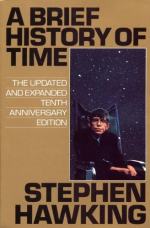
|
| Name: _________________________ | Period: ___________________ |
This test consists of 15 multiple choice questions and 5 short answer questions.
Multiple Choice Questions
1. The distance light travels in an earth year is called what?
(a) Light speed.
(b) Light distance.
(c) A light year.
(d) Light time.
2. What is the name of the particles that make up light?
(a) Electrons.
(b) Protons.
(c) Photons.
(d) Gluons.
3. Groups of atoms create what?
(a) Matter.
(b) Empty space.
(c) Electrons.
(d) Protons.
4. What is the unit of measurement for particle energy?
(a) Electric volts.
(b) Electric particle volts.
(c) Electron volts.
(d) Eclectic volts.
5. Who created the relativity formula that states energy equals mass multiplied by the speed of light squared?
(a) Aristotle.
(b) Einstein.
(c) Galileo.
(d) Newton.
6. The point at which the force of a black hole becomes so strong that nothing can escape is called what?
(a) Crush point.
(b) Escape horizon.
(c) Event horizon.
(d) Last chance.
7. How does Hawking define scientific theory?
(a) A model of the universe with a set of rules.
(b) A model of the universe that predicts some events, but isn't accurate.
(c) A model of the universe that meets common sense expectations.
(d) A model of the universe made up of molecules.
8. In what year did Wolfgang Pauli bring the exclusion principle to physics?
(a) 1925.
(b) 1928.
(c) 1932.
(d) 1941.
9. How far away is our sun from the earth in terms of light?
(a) 8 light minutes.
(b) 9 light minutes.
(c) 9 light months.
(d) 8 light months.
10. Quanta are made of what?
(a) Packets of emitted gamma radiation.
(b) Packets of emitted astroelectric radiation.
(c) Packets of emitted hydroelectric radiation.
(d) Packets of emitted electromagnetic radiation.
11. Who brought forth the idea that the earth and planets revolve around the sun?
(a) Aristotle.
(b) Ptolemy.
(c) Galileo.
(d) Copernicus.
12. What shape did Aristotle think the Earth was?
(a) A sphere.
(b) Oval.
(c) A disk.
(d) Flat.
13. What is one of the colors of quarks?
(a) White.
(b) Purple.
(c) Red.
(d) Yellow.
14. What does a particle with 0 spin look like?
(a) Identical in all directions.
(b) Different from different directions.
(c) Different only if spun half way around.
(d) Different after It makes two full rotations.
15. Who proposed the elliptical orbits of the planets?
(a) Einstein.
(b) Galileo.
(c) Newton.
(d) Kepler.
Short Answer Questions
1. The only constant in the universe is what?
2. Edwin Hubble's observation that the universe is expanding supports what theory?
3. Philosophers try to understand the universe using what method?
4. What travels at the speed of 186,000 miles per second?
5. In the universe, objects move in what type of direction?
|
This section contains 398 words (approx. 2 pages at 300 words per page) |

|




